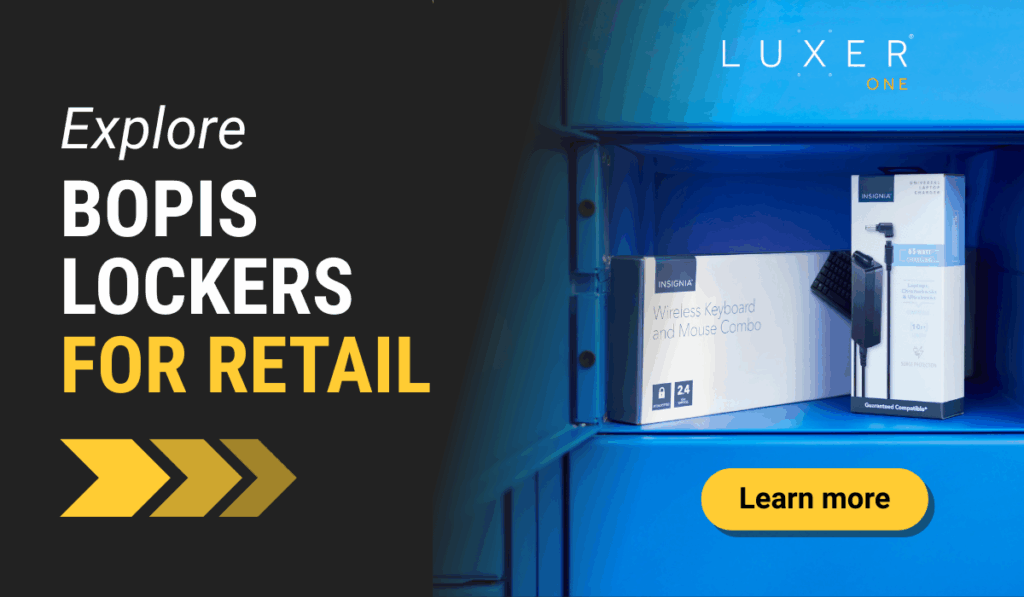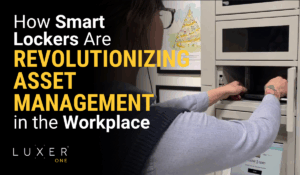What is Last-Mile Delivery?
When you order food to your hotel room, pick up an online order at a store, or grab a takeout meal from your favorite restaurant, you’re experiencing the last mile of delivery, the final and most critical step of logistics.
Last-mile delivery refers to the movement of goods from a local distribution hub to their end destination, often a customer, guest, or employee. It’s where logistics meets real-world experience, and in commercial environments, it’s no longer just about speed, it’s about reliability, security, and service.
According to research, the last mile accounts for more than 50% of total shipping costs making it the most expensive part of the supply chain. Yet, for businesses like hotels, retailers, and restaurants, it’s also the most visible touchpoint with the customer, where a smooth or failed delivery can define the entire brand experience.
In this blog, we explore how the last mile shows up in three major verticals: hotels, retail, and quick-service restaurants (QSRs). Each faces different pressures, guest package management, rising click-and-collect orders, and surging digital food pickups. But, they all share the need for more reliable, organized, and efficient handoff systems.
Why the Last Mile Matters
For businesses, last-mile delivery is about more than getting products from point A to point B, it’s about managing complexity What challenges occur in the last mile of delivery? Commercial environments have unique constraints: limited space for couriers, varying access hours, security protocols, and multiple delivery types (food, parcels, returns, internal assets). A single location might handle dozens of deliveries daily, each with its own timing and urgency. Why is last-mile delivery important now? Customer expectations have changed. Guests and shoppers expect flexibility, immediacy, and communication. That demand has collided with labor shortages, rising carrier costs, and limited urban space, forcing operators to rethink how to handle the final handoff.
Hotels: The 24/7 Delivery Challenge
Hotels have become mini logistics hubs. Between room service, guest deliveries, and staff shipments, managing packages has become an around-the-clock operation. What does last-mile delivery look like for hotels? It often includes third-party food delivery, luggage shipping, and personal parcels. The issue? Couriers arrive at all hours, and front desk staff are left juggling check-ins, calls, and pizza boxes. In fact, half of hotel guests now order delivery or dine off-property during their stay, which has driven many hospitality brands to partner with delivery platforms rather than operate traditional kitchens. In addition to food delivery, guest package management has become a major operational strain, with many properties receiving dozens of guest parcels each day. Front-of-house teams are often left to sort, store, and track these items while balancing check-ins and guest service, creating a growing need for more organized, self-serve delivery and pickup processes.Retail: When Click-and-Collect Becomes the Brand
Buy-online-pickup-in-store (BOPIS) has become a core part of the retail experience. In 2025, it’s projected to make up 10.5% of all U.S. e-commerce salesand that number keeps growing. Why does last-mile delivery matter for retailers? Because it shapes two crucial customer moments: order pickup and returns. A poor pickup experience can negate the convenience of online ordering, and a slow returns process can frustrate customers and strain staff. In 2024, U.S. retailers processed an estimated $890 billion in returns, with a return rate near 17%. Optimizing last-mile operations, through secure, self-serve returns and pickups, saves labor and improves the customer journey.
Restaurants & QSRs: The Fast Lane to Friction
With the surge in digital orders, restaurants must manage delivery driver traffic and customer pickups alongside traditional dine-in. Without a dedicated system for handoff, whether in the store or externally, brands risk bottlenecks, service delays, and diminished food quality. On top of that, many locations now handle a constant flow of third-party couriers arriving simultaneously, which can overwhelm small front-of-house areas and disrupt staff workflows during peak meal periods. How can QSRs improve their last-mile experience? Quick-service restaurants can strengthen their last-mile operations by creating clearer, more organized pickup workflows for both delivery drivers and customers. Establishing designated pickup zones, improving order-status visibility, and separating courier traffic from dine-in lines helps reduce congestion and wait times. By implementing organized pickup lockers, accurate order tracking and verified pickups can ensure food quality and reduce wait times for both customers and drivers.
Security, Trust, and Sustainability
Package theft isn’t just a residential concern, it’s increasingly common in hotels, retail backrooms, and office spaces. In 2024 alone, 58 million packages were stolen across the U.S., totaling $16 billion in losses. How can businesses make last-mile delivery more secure and sustainable? Secure pickup infrastructure prevents theft and lost items, while centralized delivery points reduce unnecessary trips and failed deliveries. Consolidated handoffs also mean fewer vehicles idling at curbs, cutting emissions and improving city logistics.A Smarter Way to Manage the Last Mile
The best last-mile strategies in commercial settings share a few key traits:
- Verified, trackable delivery and pickup
- Flexible, 24/7 access
- Reduced dependency on staff
- Integration with delivery apps and systems
If you’re exploring ways to make last-mile delivery more reliable, Luxer One offers smart locker systems built for commercial environments. We provide secure, auditable, and branded delivery experiences that help hotels, retailers, and restaurants meet the new expectations of convenience and control.







